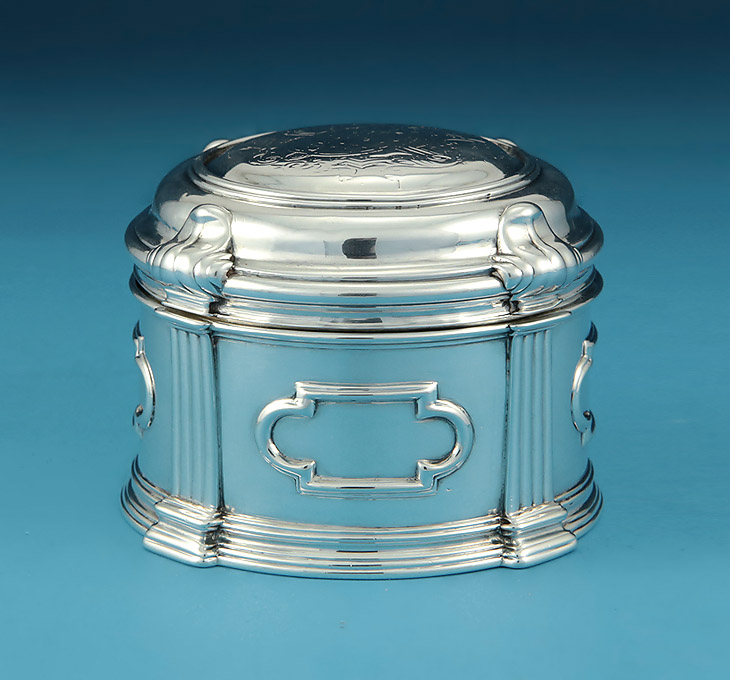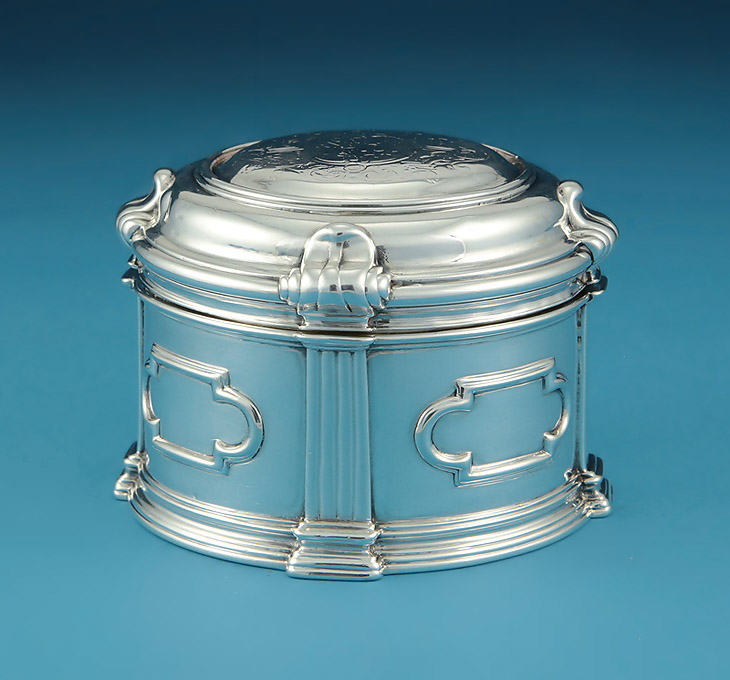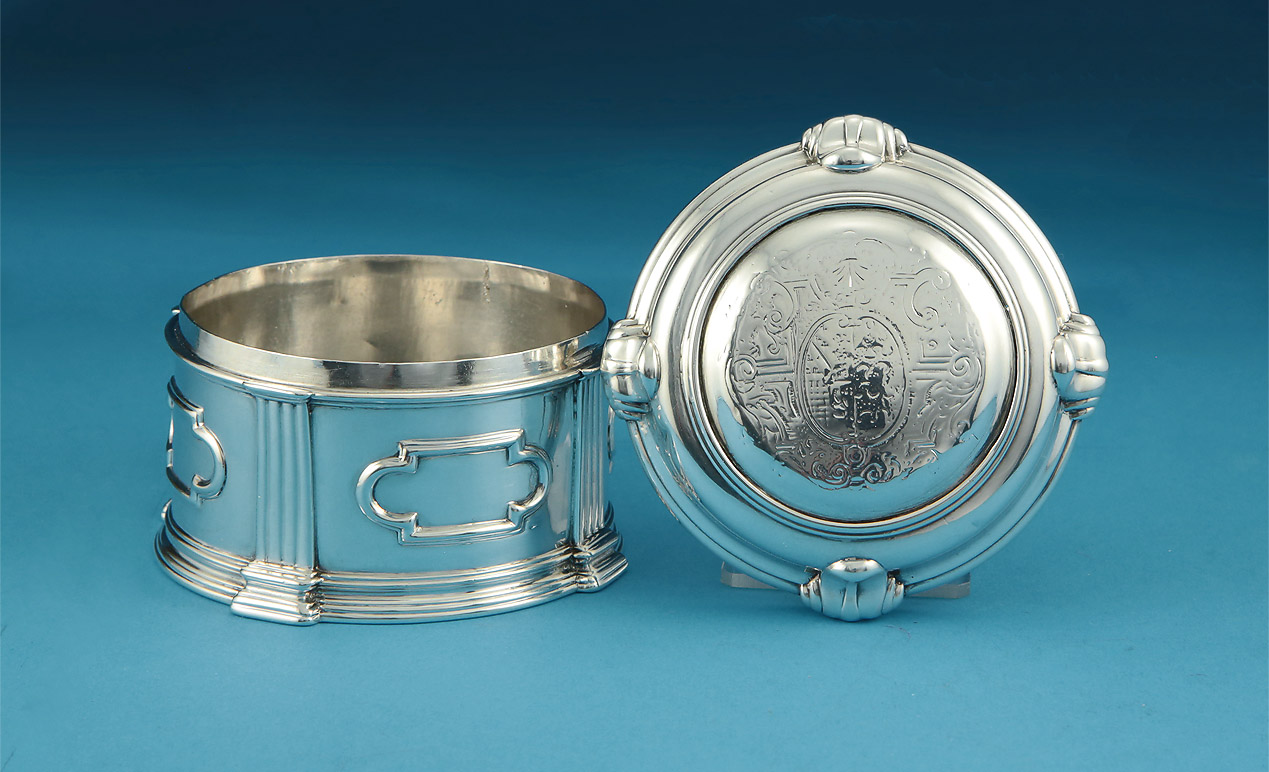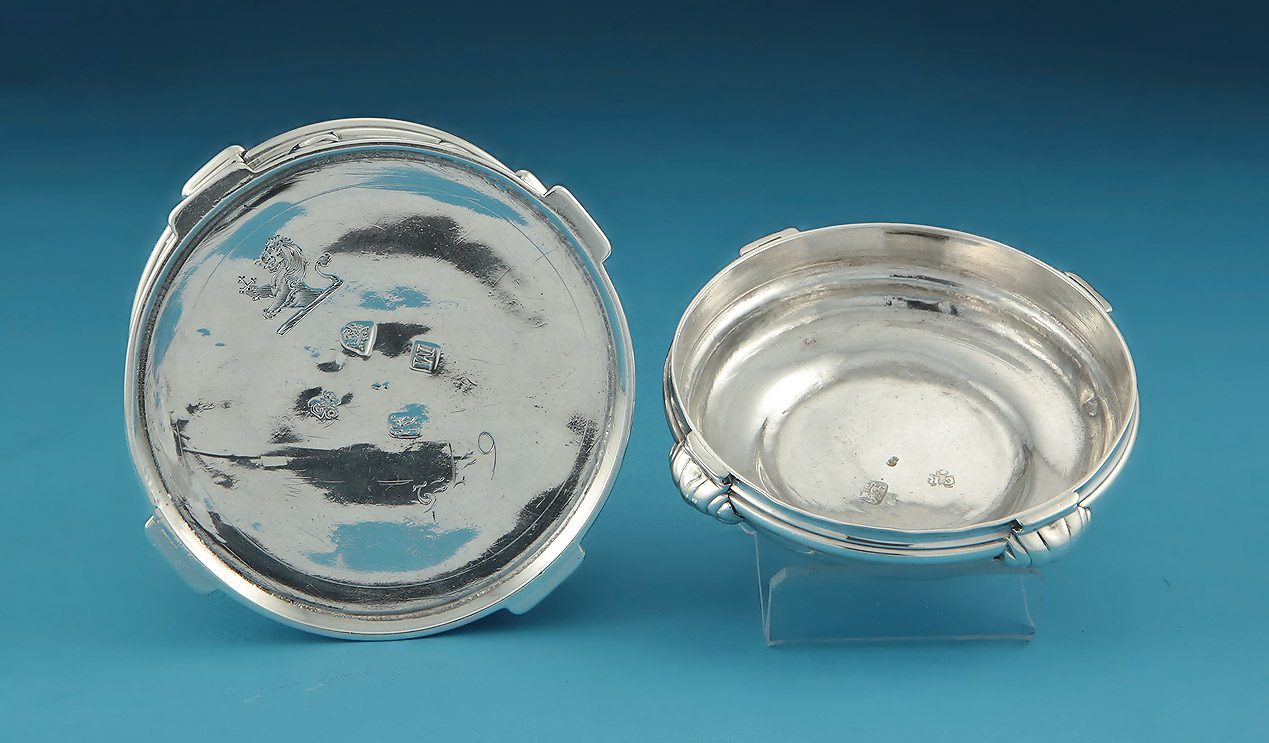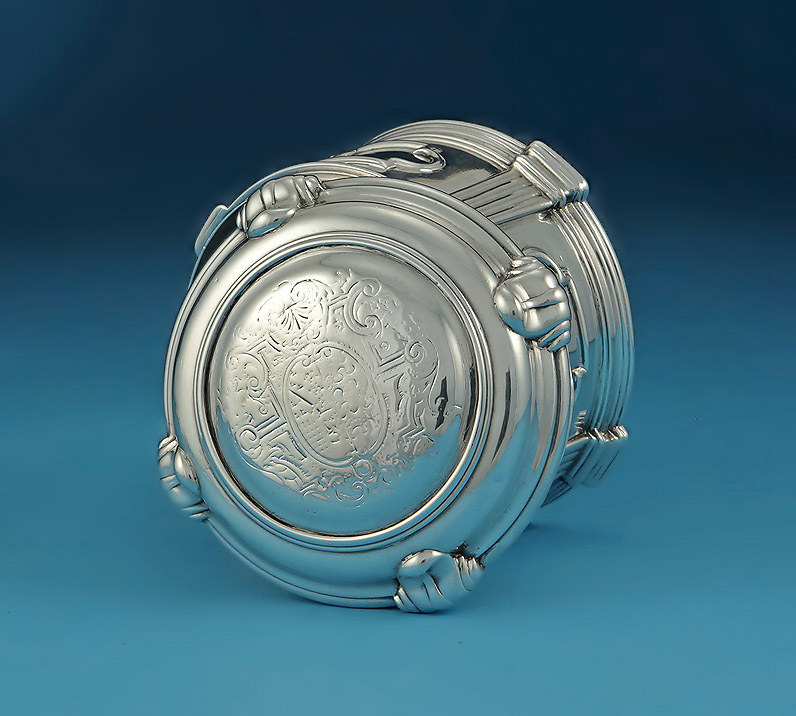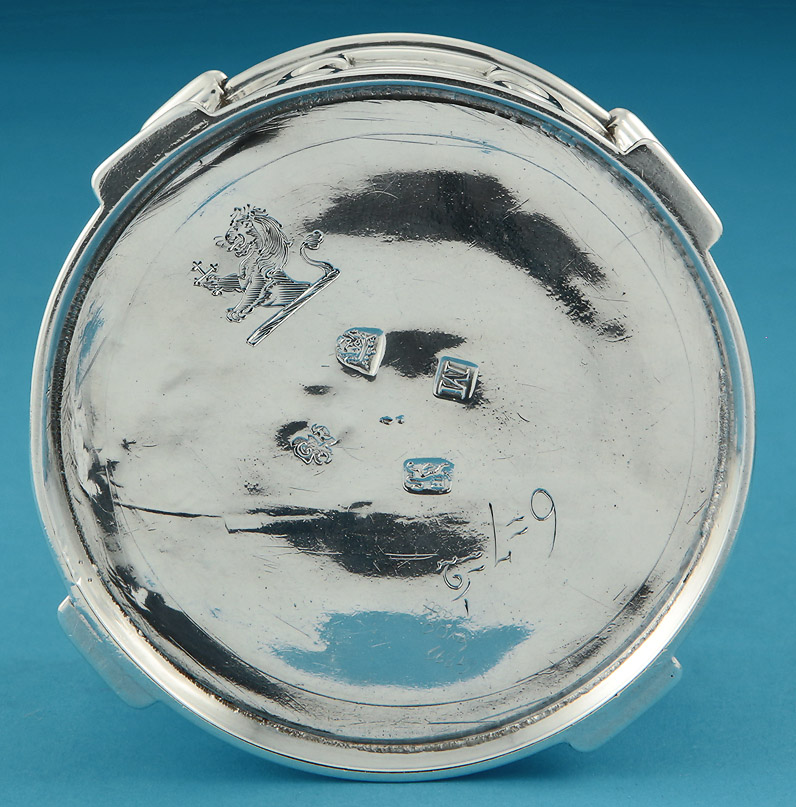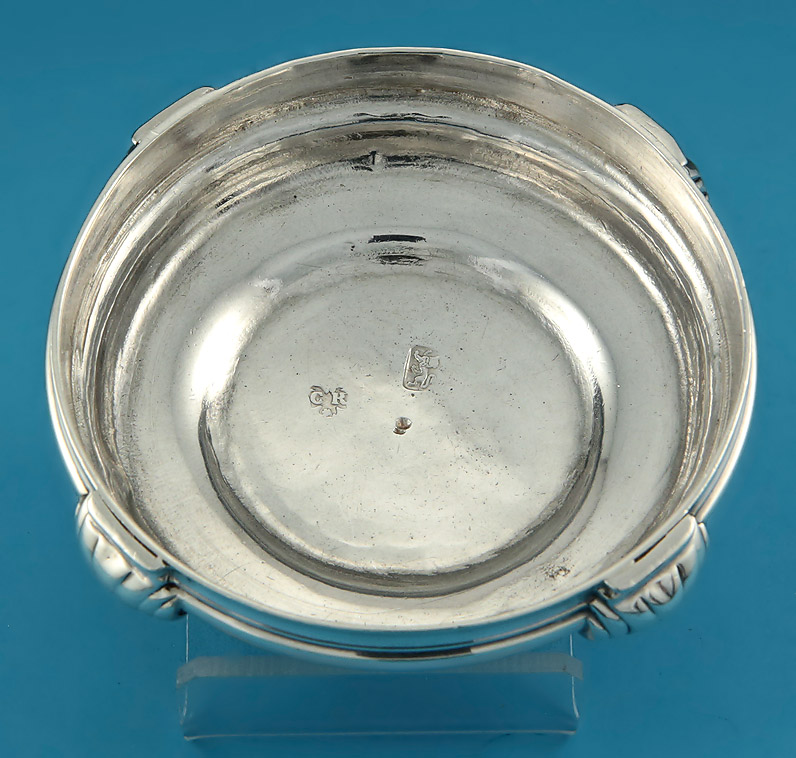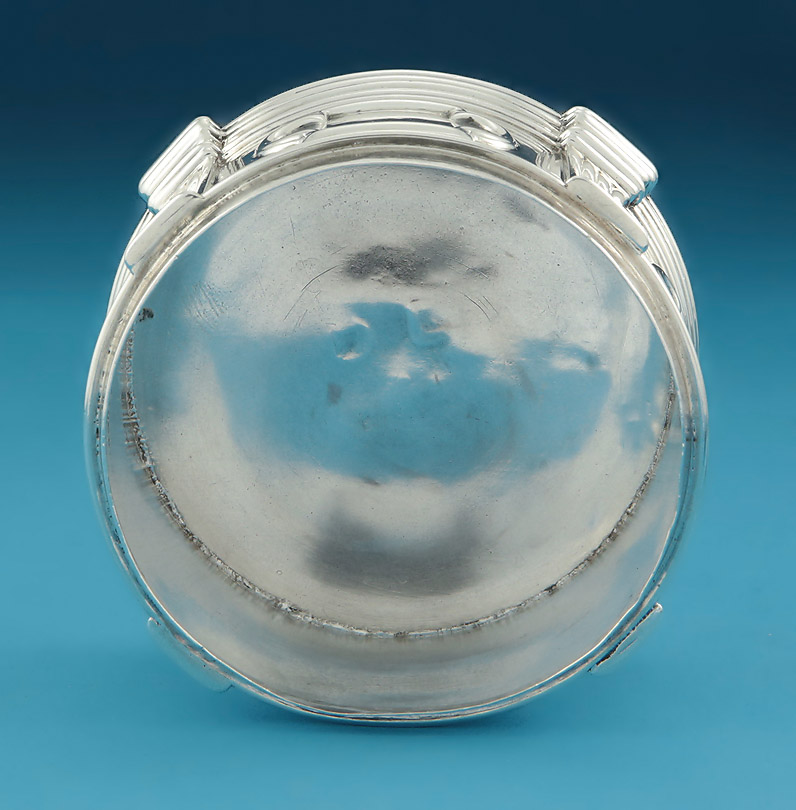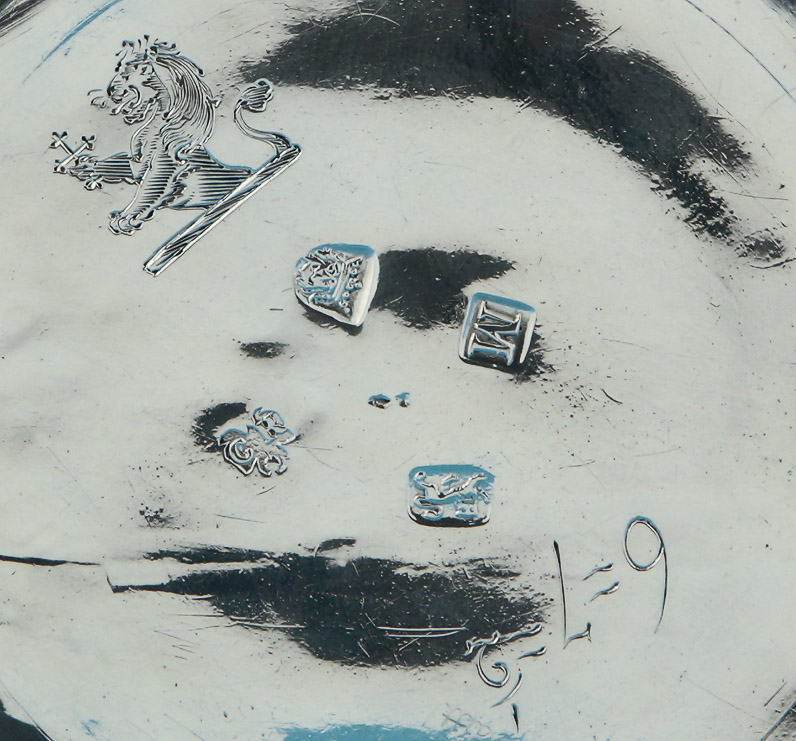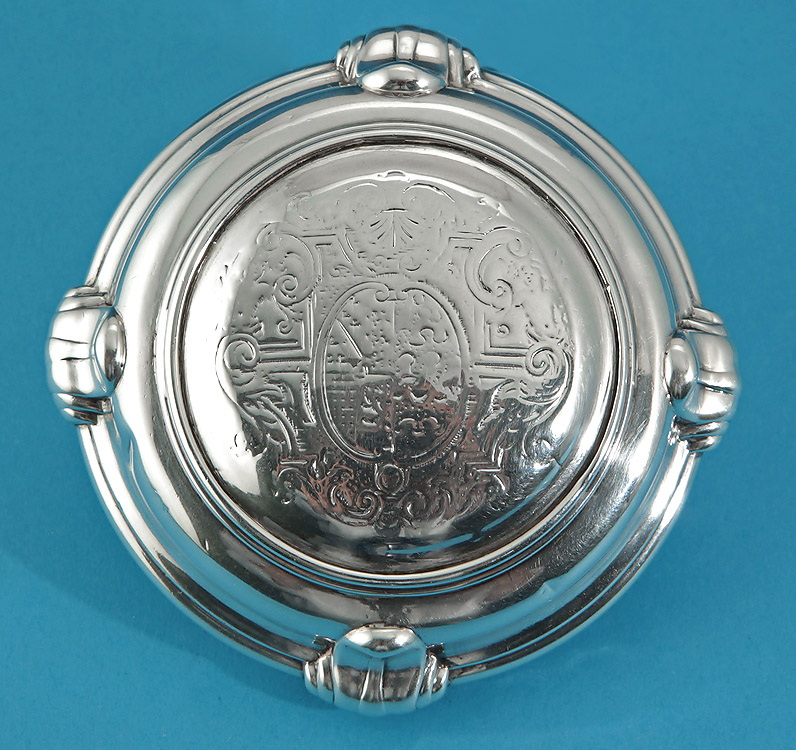* These armorial bearings undoubtedly commemorate the marriage of
Edward Howard, the 9th Duke of Norfolk (born 5th June 1686 died 20th September 1777)
and Mary Blount (born circa 1712 died 27th May 1773),
the second daughter and co-heiress of Edward Blount, of Blagden in the County of Devon.
Edward and Mary were married on the 26th November 1727.
Edward was the second son of Lord Thomas Howard, of Worksop in the County of Nottinghamshire and Mary Elizabeth Savile,
the daughter and sole heiress of Sir John Savile, the 1st and last Baronet of Copley in the County of Yorkshire.
Edward's father, Thomas was the second son of Henry Howard, the 6th Duke of Norfolk.
Given the date of manufacture of this particular piece it undoubtedly formed part of a greater suite of silver
that may well have been commissioned by Edward or by the couple together in order to celebrate their marriage.
The distinctive columns and applied cartouches on the side of this box match other pieces supplied
to the Norfolk family by Kandler around the same time,
including a set of baluster casters, some of which remain at Arundel Castle.
It is unusual that Edward and Mary's arms are impaled for ordinarily as an heraldic heiress
Mary would have placed her arms in pretence resting centrally over those of Edward's arms.
Perhaps from an aesthetic viewpoint they preferred their arms to be impaled.
Edward succeeded his brother, Thomas Howard, the 8th Duke of Norfolk on his death in 1732.
So the Howard arms shown here predate Edward inheriting the Dukedom of Norfolk,
hence the cadency mark of a crescent as a second son placed on the fess point of his arms.
At the time of the Jacobite Rising of 1715, Edward's brother, Thomas Howard,
the 8th Duke of Norfolk used his influence to secure the acquittal of Edward (a lifelong Jacobite)
on the charge of high treason.
On Edward's death in 1777 as he and Mary never had any children, the Dukedom of Norfolk and
several of the inferior peerages were inherited by a distant cousin of Edward's whilst the Earldom of Norwich
and the Barony of Howard of Castle Rising that were granted to his grandfather, Henry Howard, the 6th Duke of Norfolk,
fell into extinction for want of a male heir. Seven baronies by writ he also held at the time of his death fell into abeyance.
The Duke of Norfolk is the premier duke in the peerage of England,
and also, as Earl of Arundel, the premier earl.
The Duke of Norfolk is, moreover, Earl Marshal and hereditary Marshal of England.

Duchess of Norfolk, Mary Howard, nee Blount, by William Hoare, 1730's
The Duchess, both intelligent and assertive, was referred to as "My Lord Duchess" by Horace Walpole.
Her keen interest in arts drove her to restore the Norfolk House in 1755.
According to the astronomer William Wales, she had asked the explorer Captain James Cook
to have an island named after her. He had not heard about the Duchess's death
when he discovered Norfolk Island, and named it in her honor.
Heraldry Courtesy of John Tunesi of Liongam
Hertfordshire, United Kingdom
|
